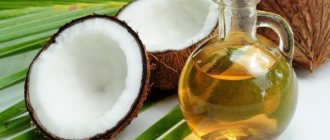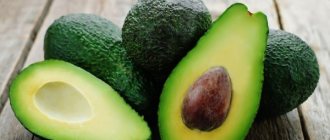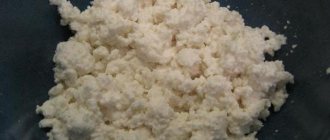Aspartic acid is one of the non-essential (endogenous) amino acids that a person can receive through food. Its concentration increases until age 35, after which it begins to decline. This is followed by a decrease in testosterone levels, since it is associated with DAA. But this is not the only function of acid that is important for the body of every person, especially athletes.
Some interesting facts:
- The formula of aspartic acid is C₄H₇NO₄.
- The acid and its salts are included in medications used in the treatment of cardiovascular disorders.
- It has several other names: aminosuccinic acid, aspartate, D-Aspartic acid or DAA.
- It is found in the body in free form and in protein compounds.
Aspartic acid: synthesis, formation
The process of synthesis of aspartic acid by a living organism occurs by converting the essential amino acid threonine into an isomer of another amino acid - homoserine with further oxidative reactions.
The substance was first discovered at the beginning of the 19th century. Scientists Etienne Ossiana Henry and Auguste-Arthur Plisson obtained the acid as a result of the reaction of the substance asparagine with water in the presence of strong mineral acids. Previously, asparagine was isolated from asparagus juice by boiling. A few years later, aspartic acid was recognized as the most important component of proteins.
In modern production, the amino acid is obtained by condensation of several esters (acetaminomalonic acid and chloroacetic acid). The carboxyl group is removed from the resulting products, followed by hydrolysis.
To compensate for the lack of aspartic acid in the body, you can eat certain foods: meat, cane, asparagus, oatmeal, avocado, soybeans.
This food contains too little amino acid, so only dietary supplements with a high concentration of the substance are suitable for medicinal purposes.
Foods containing amino acid
You can buy aspartic acid at the pharmacy. However, it is preferable to consume foods that contain this substance in maximum quantities. This is due to the fact that in this form the amino acid is absorbed by the body much better. Let's look at which foods contain the most aspartic acid. The list included:
- peanut;
- tomatoes;
- asparagus (asparagus);
- soybean sprouts and beans;
- coconut;
- potato;
- poultry meat;
- beef;
- sea fish;
- juice from apples of the Simirenko variety;
- fresh tropical fruits.
Aspartic acid: formula
The formula for aspartic acid was discovered in 1833 by the scientist J. Liebig. It has the form C4 H7 NO4.
The structural formula of the acid is as follows. You need to know that aspartic acid has several forms that differ in structure: L and D forms. The first is found in the human body in large quantities, and the second is found only in adults.
Despite its general functions, L-aspartic acid is responsible for protein synthesis and removal of toxic substances, and the D form normalizes brain function and stimulates hormone production. Such differentiation is not particularly important, because when the L-form enters the body, it is transformed into the D-amino acid isomer.
general characteristics
Natural aspartic acid with the formula C4H7NO4 is colorless crystals with a high melting point. Another name for the substance is aminosuccinic acid.
All amino acids used by humans for protein synthesis (except glycine) have 2 forms. And only the L-form is used for protein synthesis and muscle growth. The D-shape can also be used by humans, but it performs slightly different functions.
The aspartic amino acid also exists in 2 configurations. L-aspartic acid is more common and is involved in many biochemical processes. The biological role of the D-form is not as diverse as its mirror isomer. The body, as a result of enzymatic activity, is able to produce both forms of the substance, which then form the so-called racemic mixture of DL-aspartic acid.
The highest concentration of the substance is found in brain cells. By influencing the central nervous system, it increases concentration and learning abilities. Researchers say that increased concentrations of the amino acid are found in the brains of people with epilepsy, but in people with depression, on the contrary, it is much less.
Aspartic acid reacts with another amino acid, phenylalanine, to form aspartame. This artificial sweetener is actively used in the food industry, and acts as an irritant on the cells of the nervous system. For this reason, doctors do not recommend frequent use of aspartic acid supplements, especially for children whose nervous systems are more sensitive. They may develop autism against the background of aspartates. The amino acid can also affect women's health and regulate the chemical composition of follicular fluid, which reduces reproductive potential. And frequent consumption of aspartates by pregnant women can negatively affect the health of the fetus.
Role in the body:
- Aspartic acid is important in the formation of other amino acids such as asparagine, methionine, isoleucine, arginine, threonine and lysine.
- Relieves chronic fatigue.
- Important for the transport of minerals necessary for the formation and functioning of DNA and RNA.
- Strengthens the immune system by promoting the production of antibodies and immunoglobulins.
- It has a positive effect on the functioning of the central nervous system, maintains concentration, and sharpens brain function.
- Helps remove toxins from the body, including ammonia, which has an extremely negative effect on the functioning of the brain, nervous system and liver.
- Under stress, the body needs additional doses of amino acids.
- It is an effective remedy against depression.
- Helps convert carbohydrates into energy.
Aspartic acid: composition
The composition of dietary supplements with aspartic acid is quite simple: they contain only one component that affects hormone levels and other indicators. The high concentration of acid allows you to achieve maximum effect in a short period of time.
Depending on the type of production, the preparations may contain additional ingredients - residual products. For example, wheat, milk, peanuts, herbs and more. They are harmless to the body and are contained in very small quantities, which does not affect the properties of the supplement in any way.
The Main Benefit of Taking DAA for Men
At the time of writing, many conclusions about the beneficial properties of DAA are based on anecdotal evidence from “volunteers”, assumptions and results of animal experiments. As stated earlier, different people may respond differently to taking DAA, and therefore it is necessary to experiment with the dosage, frequency of use and duration of the course.
- Increases physiological levels of testosterone, growth hormone and insulin-like growth factor-1 - all of these factors have a positive effect on athletic performance and a man’s sex life
- May increase the secretion of thyroid hormones (T4 and T3) due to the production of hydrogen peroxide due to the oxidation of DAA in thyroid cells - increased concentrations of thyroid hormones ultimately lead to increased metabolic rate
You must be thinking, “Only two items on the list of benefits?” Yes, but if you read these points more carefully, you will understand that the significance of these points is extremely great and cannot be underestimated. Testosterone, growth hormone and IGF-1 - these hormones have a tremendous impact on the speed of recovery after exhausting strength training, accelerate muscle growth, increase endurance during training, increase libido and have a positive effect on other aspects of the life of active men.
Aspartic acid: properties
The properties of aspartic acid are widely known to various categories of people: athletes, men and women with sexual problems or impaired cognitive functions.
The positive properties of aspartic amino acid include:
- is a component of proteins that serve as material for building cells;
- normalizes the functioning of the endocrine system through interaction with the hypothalamus;
- promotes the production of somatropin (growth hormone) and the main sex hormones of men and women (testosterone, progesterone);
- plays the role of a neurotransmitter in the central nervous system, improves brain function;
- has antibactericidal properties;
- necessary for the formation of other amino acids, such as lysine, methionine, arginine;
- promotes the movement of mineral compounds that support the normal functioning of RNA and DNA;
- enhances the protective function of the immune system;
- prevents the proliferation of microorganisms and neutralizes their toxic effects by increasing the production of antibodies;
- rids the body of nitrogen metabolism products, including ammonia;
- protects nerve cells from pathogenic effects;
- fights mental disorders, depressed mood;
- increases muscle mass.
It is worth noting that aspartic acid undergoes an oxidation stage in mitochondria, forming the energy necessary for the body. This amino acid is not only a source of energy, but also the most important energy stimulator of the brain.
Importance for the body
Strengthens the body's protective functions, increasing the amount of immunoglobulin and antibodies produced.
- Fights chronic fatigue.
- Participates in the formation of other amino acids necessary for the normal functioning of the body.
- Promotes the delivery of minerals to DNA and RNA.
- Improves brain function.
- Normalizes the functioning of the nervous system.
- Removes toxins from the body.
- Helps fight stress and depression.
- Participates in the process of converting carbohydrates into energy.
Aspartic acid: application
Aspartic acid is used in several completely different cases, such as:
- depression (you can also get rid of it with fish oil, ademetionine, phosphatidylserine);
- cognitive disorders (impaired thinking, memory impairment);
- erectile dysfunction and decreased sexual activity;
- for the purpose of building muscles for athletes;
- hormonal imbalance (hormone deficiency);
- CNS disorders;
- for the treatment of cardiovascular diseases;
- visual impairment (myopia, nyctalopia);
- toxic liver contamination;
- chronic fatigue syndrome;
- postoperative period or recovery after a serious illness.
It is important that with an insufficient amount of amino acid in the body, patients experience memory impairment, a depressed state and a reluctance to engage in vigorous activity. However, with an increased amount of the substance in the body, a person feels nervous and aggressive, and is unable to control emotions. There are even changes in blood density, which often causes blood clots in the blood vessels.
Typically, the use of aspartic acid is necessary for all people after 40 years of age. At this age, even in a healthy person, its level begins to decrease. Therefore, in order to prevent possible diseases, it is advisable to take acid without a good reason.
Signs of excess
An excess of a substance, as well as a deficiency, negatively affects human health. The nervous system suffers the most. A person becomes irritable, aggressive, his sleep pattern is disturbed, and a sharp change in mood occurs. An excess of the substance often causes blood thickening and headaches. To avoid such negative consequences, you should exercise, follow a diet and sleep schedule.
Aspartic acid: testosterone
Scientists have proven that aspartic acid regulates the synthesis of testosterone, the main male sex hormone. This biologically active substance affects not only the production of sperm, but also the development of muscles and bones, and is capable of establishing an emotional background.
The increase in this hormone was first studied in studies on rats. A few years later, the effectiveness of aspartic acid was confirmed once again, but in this case the substance was taken by people. Thus, after 12 days of consuming the daily norm of aspartate , the level of the male hormone increased by almost half, which became a landmark discovery in the world of medicine.
The amino acid can also increase the production of its own gonadotropin. This hormone is produced in the body of a pregnant woman, as well as in the anterior pituitary gland in all people. It has a stimulating effect on the synthesis of male reproductive cells and is necessary for the normal development of the organs of the reproductive system.
For male hormones, it is beneficial to take bee pollen and pregnenolone. For elevated testosterone levels, inositol is prescribed.
Aspargine: amino acid rich foods
Most foods contain asparagine, but some contain particularly high amounts. There is a lot of this amino acid in animal products:
- beef;
- poultry meat;
- eggs;
- sea fish.
Plant foods rich in asparagine:
- asparagus;
- wheat and soybean grains;
- alfalfa;
- peanut;
- Semirenko apples;
- citrus fruits (orange, lemon, grapefruit);
- potato;
- tomatoes.
The need for this substance for an adult is no more than 3 grams, but this volume should be divided by 2-3 times. You should drink no more than 1.5 grams at one time. In some situations, the body requires more asparagine, such as certain diseases or other stressful situations on the body, such as:
- diseases of the nervous system;
- brain diseases;
- memory impairment;
- decreased performance;
- some eye diseases (myopia);
- heart diseases.
The body's need for asparagine decreases in the following cases:
- high blood pressure;
- atherosclerosis;
- diseases associated with increased levels of male sex hormones;
This amino acid is completely absorbed by the body. Its disadvantage is that it is addictive. As a result, food, without adding asparagine to it, seems tasteless.
In conclusion, I would like to remind you once again that for people who are not involved in weightlifting and bodybuilding, additional asparagine intake is not required and may even be harmful.
Aspartic acid: libido, erection
To restore libido and normalize erection, you need aspartic acid . This is due to the fact that it increases the natural production of sex hormones, which significantly affect sexual function.
Decreased libido, as well as enlarged breasts in men and prostate disease occur due to increased estrogen levels. This happens extremely rarely, but it significantly disrupts sex life. Aspartic acid will help combat this . Both men and women can take the substance. Over time, sexual desire will resume and the previous quality of life will be restored.
Acetyl L-carnitine, pycnogenol, curcumin, Tongkat Ali and yohimbe are also suitable for restoring male erection.
How to take D-aspartic acid. Recommended dose
The scientific studies mentioned above used a dose of d-aspartic acid ranging from 3 g to 6 g.
As has been shown, there is no clear relationship between dose and effect: the result depends on the physical activity of men and the initial level of testosterone. Moreover, with large doses (6 g) and long-term use, the effect of suppressing the natural production of testosterone in athletes is possible...
Most likely, we will not be much mistaken if we draw the following conclusion: in sports and bodybuilding, d-aspartic acid as a testosterone booster in any doses is useless
, but for physically inactive men and
those who have low testosterone
or problems with potency,
a dose of ~3 g per day can be recommended
.
We recommend
: Whey protein hydrolyzate in bodybuilding: reviews from scientists, how effective it is for gaining weight, how best to take it
Aspartic acid: bodybuilding
Aspartic acid is often used in bodybuilding by professional athletes to quickly build muscle mass. With its help, they regulate the functioning of the endocrine system, namely the production of growth hormone and testosterone, a hormonal factor for muscle growth. Athletes often take the more well-known herbal dietary supplement Tribulus.
Aspartic acid is necessary not only for those who want to have a sculpted, pumped up body. Its regular use will help achieve high results in powerlifting, where the main role is played by the athlete’s strength indicators. During preparation for competitions or active training, this substance must be taken. The first positive changes will appear in the loss of excess weight and increased endurance during active physical activity.
Casein, glycine and alpha-lipoic acid are used as fat burners and also for muscle building. Citrulline is especially important, increasing the duration of training and restoring muscles.
Amino acid in sports nutrition
As mentioned above, aspartic acid affects the production of hormones. It accelerates the synthesis of somatotropin (growth hormone), testosterone, progesterone, gonadotropin. In combination with other components of sports nutrition, it helps to build muscle mass and prevents a decrease in libido levels.
Thanks to its ability to break down proteins and glucose, aspartate increases the amount of energy in cells, compensating for its costs during training.
Aspartic acid: preparations
1). There are many drugs containing D-aspartic acid . The leading position among them is D-Aspartic Acid (300 g, 0.66 lb) from AI Sports Nutrition . This is a natural dietary supplement that can increase blood testosterone levels by 42% in less than 2 weeks.
Recommendations for use of the additive:
- permissible dose – 3 g;
- take once in the morning after waking up;
- prohibited for children under 18 years of age, pregnant women or during lactation;
- be sure to consult a doctor if you have additional diseases or if your relatives have them;
- an excessive dosage can provoke myocardial infarction or stroke, as well as other serious health problems;
- If negative symptoms appear (headache, dizziness, rapid heart rate), go to the hospital.
Physiological role of DAA in the male body
Animal studies have shown that DAA acts on the hypothalamus and stimulates the secretion of both GnRH and SRH, which ultimately leads to increased production of testosterone, growth hormone and IGF-1. [1,2,3]
Another study found that DAA may also stimulate the production of thyroid hormones, especially T3 and T4. [5] There is a hypothesis that this occurs after the oxidation of D-aspartic acid in the thyroid gland, releasing hydrogen peroxide, which is an important precursor for the iodination of tyrosyl molecules (which is necessary for the synthesis of thyroid hormones).
However, remember that the results of animal experiments cannot always be completely extrapolated to humans. Unfortunately, in the case of DAA, there are very few human studies, and the one study I link to in the article is not very reassuring. [4] However, this does not mean that DAA is a dummy, because the mentioned experiment was short-lived with a small sample, and it used minimal dosages of DAA (3 g per day).
At the same time, we have a lot of positive feedback from athletes about the results of taking the nutrient, and therefore further study of the issue will definitely be useful. Perhaps you just need to increase the dosage, taking into account the individual response to the drug. There is also evidence that sensitivity to DAA depends on age, endocrine system status, training status, diet, etc.
Aspartic acid: Primaforce
2). Primaforce is a dietary supplement containing D-Aspartic Acid (DAA, D-Aspartic Acid) (100 g). As a result of testing, this product has proven its effectiveness and ability to increase testosterone levels, as well as speed up recovery after illness and surgery.
Recommendations for use: take 3 g (1 scoop) with your first meal. You need to know that the preparation may contain residues of some products: wheat, milk, soybeans, herbs, eggs, seafood, peanuts.
Natural springs
Sources of d-aspartic acid are animal and plant products containing protein. To compensate for the deficiency of the substance, they must be constantly added to the diet.
Table - Food sources of aspartic acid
| Products | Concentration, g/100 g |
| Soybeans | 5,02 |
| Peanut | 3,1 |
| Beef | 2,41-3,16 |
| Lentils | 2,92 |
| Skipjack tuna | 2,7-2,9 |
| Veal | 2,7 |
| Peas, beans | 2,6-2,7 |
| Chicken, turkey | 2,1-2,57 |
| Baked pike | 2,53 |
| Oats | 1,5 |
| Salted herring | 1,45 |
| Chicken eggs | 1,12-1,44 |
| Rice, buckwheat | 0,7-1,4 |
| Asparagus | 0,5 |
Aspartic acid: in the pharmacy
Pharmacy products are not always of high quality and original. This is the situation with aspartic acid : it is difficult to buy in a pharmacy. There is a chance to purchase an expensive remedy from domestic manufacturers, but this medicine will not help solve existing problems due to the low concentration of the amino acid itself.
The only option is to turn to online pharmacies, where official representatives of world pharmaceutical companies present a natural product. A link to such a site is given below.
Application in cosmetology
Aspartic acid is included in many skin and hair products. It accelerates the restoration of the dermis, cleanses and rejuvenates it, and eliminates age spots.
Attention! The amino acid is recommended to be taken orally for hair loss caused by hormonal imbalances.
Top 3 products with aspartic acid:
★★★★☆
Pixi Beauty, Glowing Skin Toner, Exfoliating Toner, 8.5 oz (250 ml)
2 145 ₽
More details
★★★★☆
Pixi Beauty, Skintreats, exfoliating, radiance-boosting toner for everyone...
1 109 ₽
More details
★★★★☆
InstaNatural, Anti-Aging Eye Cream “Essence of Youth”,…
1 035 ₽
More details
Full catalog:
show all
Aspartic acid: instructions
There is nothing complicated in the instructions for using aspartic acid
- should be stored in a dark place, avoiding direct sunlight;
- keep away from children;
- follow the indicated dosage;
- Before use, be sure to consult a doctor.
Aspartic acid: how to take
The dose safe for the body is 3 g (1 false measure) of aspartic acid . The dose can be divided into several times: in the morning immediately after sleep, before lunch and before the last meal.
drink aspartic acid for 2-3 weeks, then take a week break. This cyclic scheme is the most effective for obtaining the desired effect.
The doctor may also prescribe an increased dose depending on the purpose of taking the amino acid. An increased dosage is necessary for people with severe nervous disorders, depression, abnormalities in brain function, and poor memory. Regular use of the drug can solve these problems.
Instructions for use (Method and dosage)
Take 3 g per day, divided into 3 doses 15 minutes before meals (1/3 measuring spoon). The first dose is taken in the morning (possibly with a protein shake), followed by subsequent doses in the afternoon. To maintain a constant concentration in the body, it is better to divide the dose into 3 doses. It is possible to take the entire dose at one time in the morning. If you are training on this day, then the supplement should be taken 30 minutes before training. The powder form is mixed with liquid or juice.
The course of treatment is 4 weeks, then a month off. Long-term use does not increase testosterone .
Three grams is the minimum daily dosage. After the first cycle, you need to evaluate the tolerability of the supplement and its effectiveness. In subsequent courses it is possible to increase it to 5-10 g per day.
Aspartic acid: contraindications
Aspartic acid is contraindicated:
- minors, especially children, whose nervous system is too susceptible to such dietary supplements (also in childhood there is a risk of addiction to the drug);
- pregnant women and during breastfeeding (may provoke autistic disorder in the fetus);
- hypersensitivity to the components of the supplement.
The need to take an amino acid is also reduced when:
- hormonal disorders characterized by excessive production of substances;
- atherosclerosis and pathology of blood vessels;
- high blood pressure.
With excessive dosage or improper use of the drug, an allergic rash, skin irritation, insomnia, and headache may occur. To avoid side effects, you should consult a doctor before use or use only natural products with aspartic acid that are not addictive.
Daily norm
The substance has both positive and negative characteristics, so it is important to know how to take aspartic acid correctly. For an adult, the daily norm is 3 g, no more. In addition, you can consume only 1-1.5 g of the substance at one time. Therefore, if there is a need to take an amino acid, you need to divide the daily intake by 2-3 times. The first is early in the morning, after you wake up, the second and third are just before lunch and evening meals. If the dose is divided into two times, the amino acid is consumed in the morning and evening before meals.
However, it is important to remember that both deficiency and excess of the substance negatively affect the human body. So you should not prescribe this kind of dietary supplement based on aspartic acid on your own.
The dosage also depends on various factors, for example:
- age criteria;
- illness;
- lifestyle, etc.
Only an experienced specialist can select the correct dose.
Aspartic acid: price
Prices for aspartic acid are quite high, but in online stores you can buy dietary supplements 2-5 times cheaper. At the same time, the product is of high quality and corresponds to customer reviews. They sell original nutritional supplements, vitamins, drugs, such as coenzyme Q10, rutin, choline, manuka honey, silymarin and much more. Quality guaranteed.
Who needs higher doses?
Undoubtedly, this substance is extremely necessary for people of all age groups, but in some cases the need for aspartic acid increases sharply. First of all, this applies to people with depression, poor memory, brain diseases, and mental disorders. It is important to regularly take the amino acid for people with reduced performance, cardiac diseases and vision problems.
High blood pressure, increased testosterone levels, and the presence of atherosclerotic plaques in the blood vessels of the brain are reasons for reducing the intensity of taking the substance.
Asparagine synthesis
Aspartic acid is a source of asparagine, acquiring an additional amine group NH2. It would seem simpler: take ammonia, which is always abundant and which simply needs to be neutralized, add it to aspartic acid - and here it is, asparagine.
Such a reaction really exists. It occurs with the participation of ATP under the action of the enzyme Ammonia-Dependent Asparagine Synthetase in many bacteria. Regarding humans, the opinions of luminaries differ: some believe that this reaction is not characteristic of higher animals, others argue the opposite. One thing is certain: direct synthesis of asparagine from aspartic acid and ammonia is not leading in humans. In humans, a predominantly different reaction occurs: see below.
Glutamine acts as a donor of the amine group for the synthesis of asparagine in human cells. With the participation of the enzyme Glutamine-Dependent Asparagine Synthetase, it donates one amine head to aspartic acid, and itself is converted into glutamic acid. The reaction occurs with the participation of ATP, from which two phosphoric acid residues are split off, and ATP is converted into AMP. Asparagine synthesis is an energy-intensive process that requires chemical energy stored in the phosphorus bonds of ATP.
Asparagine: structural formula
Asparagine is the amide of aspartic acid, i.e. in the second acid tail, the hydrogen atom is replaced by a second amine group. It turns out to be like a second head attached to the tail. In the world of chemical compounds, this will not surprise anyone.
Luckily for us, aspartic acid and asparagine are non-essential amino acids, i.e. the body itself synthesizes them in its biochemical factory from compounds - precursors, which are always available in abundance. Asparagine is a widely distributed compound. It accumulates in significant concentrations in some species of higher plants, and is also found in a free state in animal tissues.
Aspartic acid and asparagine are glucogenic compounds. During the process of biosynthesis, they are converted into Oxal Acetate, which either burns to form energy in the Krebs cycle, or goes to the synthesis of glycogen, which is a glucose depot in the body and is converted into glucose as needed.










